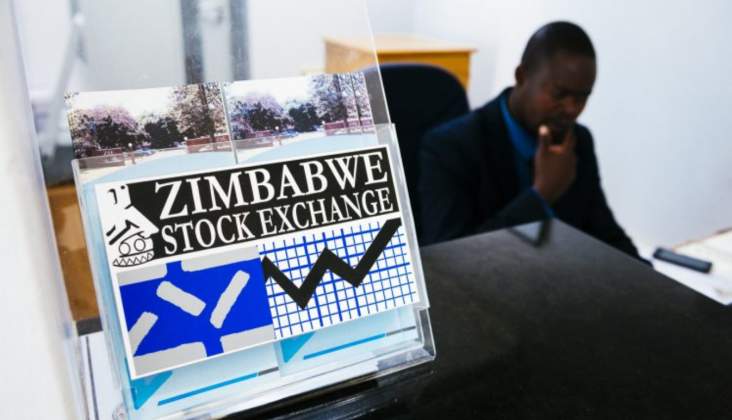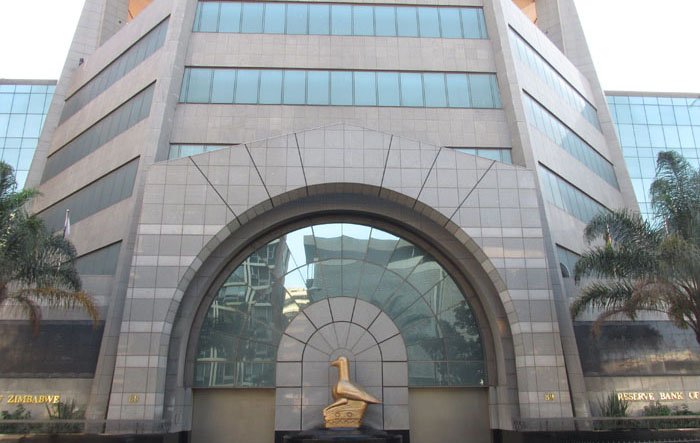Going for a united exchange rate?
A lot of people, almost 88 percent of the respectable and rules and law-abiding bidders on this week’s foreign currency auction at the Reserve Bank of Zimbabwe (RBZ), must have been startled when the weighted average on the auction slumped almost exactly 50 percent from last week to hit $258,5404 to the US dollar.
This could not have been caused or even largely caused by a deficiency of currency available for sale by the Reserve Bank, despite the decision announced on May, about 10 days earlier, that auction allotments would not exceed the amount to available currency ever again, to avoid any further backlogs in funding allotments, with the present backlog to be cleared this month from Government funds.
Just US$6,84 million was allotted. The “word” out in financial circles is that there was at least four times as much available, perhaps not as much as the US$30 million or so being allotted in recent weeks but very close to that normal number.
So we need to look for other reasons. The most obvious was that on both the main auction and the SME action no bids under $220 were accepted for allotment. The top bid on the main auction was an eye-watering $299 and on the SME auction $300, and it must be remembered that these bids compared to a weighted successful average of around $173 the previous week with recent rate creep being under $5 a week, so someone guessed something.
The most logical answer was that the cut-off was set to produce a weighted average that was very close to the Reserve Bank interbank rate, which had reached $282 on Tuesday having been creeping up since it was launched at the beginning of April and then dramatically extended to US$5000 per person a day the previous week.
This interbank rate is not something that you can used to buy 50 US$100 notes at your bank. You can only buy to pay a bill and that bill is paid by your bank. But far more stuff can be bought with the interbank money than with auction money, and you can pay your bank today and have your bill paid tomorrow. So all sorts of companies and individuals use that new market.
The Tuesday auction average was just 10 percent below the interbank rate and that gives us all a clue that there is now a definite attempt to align these two official rates.
Whether the small premium on interbank will be maintained, and there are good arguments for a small premium considering the greater flexibility of interbank money at the moment, is something we will no doubt find out.
We need to remember that in almost all countries the interbank rate is the rate and the only rate. People sell foreign currency they earn to their bank at that rate, minus the tiny margin the banks slice off the top, and when they need currency they buy it at that rate, plus that same tiny banker’s margin.
Central banks do not just sit back and do nothing. They usually see they have a role in smoothing the rate and so buy and sell foreign currency for and from reserves but these days do not try and maintain a fixed rate or defend their currency.
They let the markets set the exchange rate and basically just act as the cops, to make sure banks and some of their especially favoured customers do not act the fool.
As Zimbabwe moves towards dedollarisation that interbank rate will therefore become the fundamental rate.
We are still a long way off, mind you, since we are dealing with a US$5000 a day trading limit, but throw in the auction money and we suddenly have most of the commercial transactions using very similar rates.
The interbank market from the start was willing buyer and willing seller, and was not fed by the Reserve Bank.
Yet although the rates were below the black market the banks actually bought more foreign currency on that market than they sold in the first five weeks, probably not much more to be honest otherwise the rate would not have been rising. And trading was limited to US$1000 a day.
It will take several weeks probably for the new rate policy at the auctions to become totally clear.
But there was major confusion this week when the range even on allotted bids was $80 or 36 percent, and there must have been a lot of people with quite valid bids and a reasonable expectation of allotment going down to say $170 or $180.
That sort of percentage range has not been seen since the very first auctions almost two years ago.
Bidders for next week’s auction, which have to include most of those who bid this week but lost out, have already written down their number since bids have to be submitted a week up front. But we would expect a lot would have gone for something very close to the interbank rate since the sudden near alignment of the two rates could not have escaped notice.
That complication, of an auction bid having to be submitted a week in advance, is something that will need to be investigated and modified in some way if there is to be growing alignment to produce a single exchange rate. Otherwise the interbank premium can cope with fluctuations.
The recent weird behaviour of the black market opens a window of opportunity for the authorities to align rates without wrecking the economy, just as the surge in mid-2020 allowed the introduction of the managed auction system in the first place.
Pricing, regrettably, had largely gone into alignment with the black market thanks to the backlog in allotments and other factors, including pure panic.
The question will arise, in a lot of minds, is how does the interbank-led official rate tally with the black market. And this will require people to start thinking about just what the black market actually is.
It is not a regulated market and by definitions is not a market at all. It is a bunch of people making independent decisions in desperate attempts to make money.
There is no daily price fix, with a group of the largest traders sitting round table in a seedy Avenues flat with in front of each a little black flag carrying a skull and crossbones.
Rather each trader has to make their own decisions, and that explains some of the huge range in rates. One major trader might have to make sales quite promptly to cover debts or for similar reasons. Another might be able to stockpile cash in a trunk until the rate “firms” to use their language.
It just depends. The other reason for the range is the numbers involved in a tiered system that sees money rising up a ladder as it is concentrated.
The other factor in the black market is the size of the market. It is not very big. A lot of people might use the rate but are not buying or selling in that market. The market is basically fed with new money by a part of the diaspora payments, not all of them since some are spent in direct transactions.
And most of the money coming out of the market are spent on fuel and medical bills. The dual economy in Zimbabwe, one using the local currency and one seeing foreign currency circulating means that there is far less connection between the two than many might imagine.
Most people spending foreign currency earned foreign currency, legally or illegally, or got it from a foreign relative rather than bought it. The only major exception might be those on local currency salaries buying to fill their car with petrol.
With the major squeeze on liquidity of local currency that was feeding the market, and the Reserve Bank financial intelligence unit is not just looking at bank accounts and bank transactions but also chasing the rumours that some with large local currency payments, including Government contractors, uses the black market to lock in value.
Since we are for all practical purposes a cashless economy, with the largest bank note being a Zupco bus fare and not too many of those around, it is difficult to impossible to do anything very exciting in the black market without using a bank account. So we should expect more steps. Already suspicious people face not just civil penalties but are also still barred from bank loans.
This means that the black market should wither to a fair extent and the interbank market take over asthe primary driver of exchange rates.
What looks like a decision to use that interbank rate to set the auction rate will mean that almost all commercial transactions will be at the aligned rate, and the so the black market will continue fading.
It will remain since people wanting a shot of cocaine or to buy a tank of fuel or send money to their foreign bank account will still need it, but businesses are likely to leave it alone.-eBusiness Weekly











